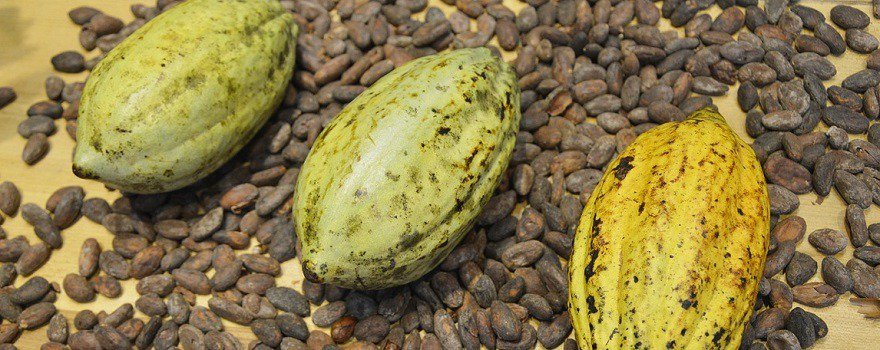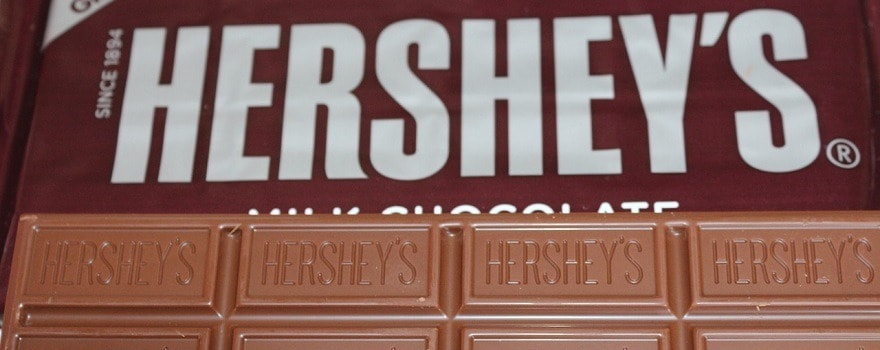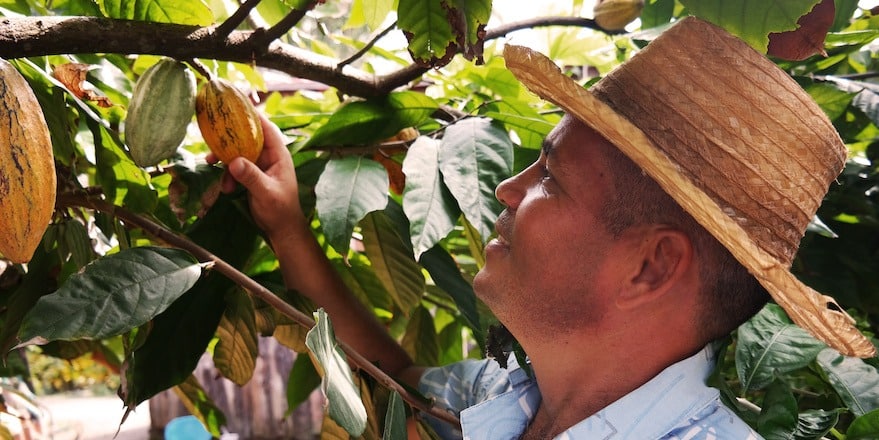The culture of cocoa
From the cacao tree to the chocolate bar
The cacao tree is a shrub that grows in tropical forests: originally from Venezuela, it is now cultivated in Central and South America, Africa, and Asia. Today, Côte d’Ivoire is the main cocoa producer in the world. Cocoa production has been increasing steadily in recent years: in 2016, it represented 4.55 million tons.
Fragile, cocoa production requires the shade of large trees and regular humidity. This is why cacao trees are generally still cultivated on family plots (80% of cocoa production), in interaction with other crops.

To become chocolate, the cocoa pods are harvested twice a year, then shelled (the cocoa beans are extracted). These beans undergo a fermentation process, then dry in the sun. The cocoa beans are then roasted and crushed. The resulting cocoa paste is filtered to extract cocoa butter on one side and cocoa powder on the other. To make dark chocolate, cocoa paste, cocoa butter, and sugar are generally used.
The complex challenges of cocoa cultivation
While chocolate delights Western palates, it is in the countries of the “South” that cocoa is produced. It is therefore an export crop for many countries in Africa, South America, and Indonesia.
Cocoa is subject to the vagaries of global trade, and its market is very fluctuating: depending on speculation, cocoa prices are constantly changing. These fluctuations affect cocoa producers first, who are often small farmers with not many income sources. Although chocolate is an expensive commodity, cocoa producers receive only 5% of the final price of chocolate.

Recent scandals, revealed by various NGOs, affect cocoa production: it is notably concerned with child labor, especially in West Africa. Between 500,000 and 1 million children are reportedly working illegally, exposed to accidents, animal bites, and pesticides. African cocoa plantations are also said to be the scene of a new form of exploitation, with recorded cases of slavery.
In 2015, a complaint was filed against the main chocolate manufacturers: Mars, Nestlé, and Hersheys, for child trafficking and forced labor in Côte d’Ivoire.
Furthermore, intensive monocultures of cocoa tend to replace family production, particularly in Indonesia and Brazil. These monocultures are at the expense of the rainforest, which suffers significant logging, and at the cost of massive pesticide use, disrupting the fauna and flora of this fragile ecosystem.
Which variety of cocoa to choose?
Criollo cocoa, the star of chocolate
Chocolatiers select cocoa beans based on their taste qualities, which differ depending on the place of production. There are three main varieties of cocoa: forastero, trinitario, and criollo.

– The forastero is the most widely cultivated variety (nearly 90%), found mainly in Africa, Brazil, and Ecuador.
– The trinitario comes from Trinidad and is primarily cultivated in Central America and Asia.
– The criollo represents less than 5% of global production. It is native to Venezuela and is only cultivated in countries bordering the Caribbean Sea. It is the most aromatic of cocoas, slightly bitter.
Industrial chocolates are generally a blend of different cocoa pastes whose origins are rarely indicated. Chocolate lovers prefer criollo cocoa, the finest but also the most expensive. The best chocolatiers only work with “grand cru” cocoas whose origins are stated: this way, the particular aromas of a particular type of cocoa can be better defined.
Prefer organic and fair-trade cocoa
Dark chocolate, and especially raw cacao, are foods full of virtues: anti-stress, aphrodisiac, antioxidant… The poor cocoa production conditions, its social and environmental impacts in producing countries, might deter us from consuming cocoa, despite being so enjoyable!
Following the scandalous revelations relating to cocoa production, the industries have committed to producing sustainable cocoa by 2020. However, progress is slow.
As consumers, we can make a difference. We can continue to consume chocolate, provided it is done consciously: we shy away from industrial chocolate, which is high in sugars and unhealthy. We prefer organic chocolate: it comes from a cocoa culture that respects the environment, without impacting deforestation, and without the use of pesticides or chemical fertilizers.
Furthermore, fair trade chocolate is also preferred. Indeed, fair trade cocoa producers are not subjected to market fluctuations as they receive a guaranteed fixed income. Fair trade cocoa producers also commit to banning child labor and respecting the environment. They can implement social projects in their community thanks to the incomes from fair trade. Even though fair trade cocoa production is increasing with 140,000 certified producers, it still only represents 1.2% of the world’s chocolate consumption.



